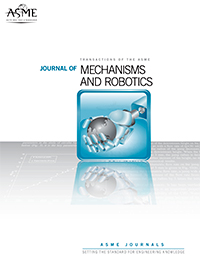Sandwich panels, for example, honeycomb structure, are widely used in various stages because they are lightweight and have high stiffness. Recently, an origami structure called truss core panel (TCP) has become known as a lightweight structure that has the same bending stiffness and better aspects in shear strength and in-plane compressive load than honeycomb panel. However, there are some difficulties in forming the TCP in general. In this study, a new forming process for TCP based on origami-forming is developed. In particular, the TCP is partitioned into several parts that can be developed into 2D crease patterns. After that, blanks of material are cut in the shape of these crease patterns and are formed by a robot system to get the desired 3D shape. In this paper, a partition method by dividing the TCP into pyramid cells and sheet plate is presented, which allows for the manufacture of a wider range of structure than before. Tool arrangement for a robot device and a countermeasure for springback are considered. By applying an origami unfolding technique, an improvement in the partition method is proposed by dividing the TCP into cell rows, and then searching for a crease pattern in order to fold that cell row. The cutting method of every cell is modified to reduce the number of facets, thereby simplifying the process. Finally, a crease pattern based on this new cutting method is presented for producing cell rows with any given number of cells.
Skip Nav Destination
Article navigation
June 2016
Research-Article
Development of a Manufacturing Method for Truss Core Panels Based on Origami-Forming
Hoan Thai Tat Nguyen,
Hoan Thai Tat Nguyen
School of Mechanical Engineering,
Hanoi University of Science and Technology,
1 Dai Co Viet Road,
Hanoi 100000, Vietnam
e-mail: hoan.ngtt@gmail.com
Hanoi University of Science and Technology,
1 Dai Co Viet Road,
Hanoi 100000, Vietnam
e-mail: hoan.ngtt@gmail.com
Search for other works by this author on:
Phuong Thao Thai,
Phuong Thao Thai
Graduate School of Advanced
Mathematical Sciences,
Meiji University,
4-21-1, Nakano,
Tokyo 1648525, Japan
e-mail: thaithao@meiji.ac.jp
Mathematical Sciences,
Meiji University,
4-21-1, Nakano,
Tokyo 1648525, Japan
e-mail: thaithao@meiji.ac.jp
Search for other works by this author on:
Bo Yu,
Bo Yu
Meiji Institute for Advanced Study
of Mathematical Sciences,
Meiji University,
4-21-1, Nakano,
Tokyo 1648525, Japan
e-mail: yubo1983@gmail.com
of Mathematical Sciences,
Meiji University,
4-21-1, Nakano,
Tokyo 1648525, Japan
e-mail: yubo1983@gmail.com
Search for other works by this author on:
Ichiro Hagiwara
Ichiro Hagiwara
Meiji Institute for Advanced Study
of Mathematical Sciences,
Meiji University,
4-21-1, Nakano,
Tokyo 1648525, Japan
e-mail: ihagi@meiji.ac.jp
of Mathematical Sciences,
Meiji University,
4-21-1, Nakano,
Tokyo 1648525, Japan
e-mail: ihagi@meiji.ac.jp
Search for other works by this author on:
Hoan Thai Tat Nguyen
School of Mechanical Engineering,
Hanoi University of Science and Technology,
1 Dai Co Viet Road,
Hanoi 100000, Vietnam
e-mail: hoan.ngtt@gmail.com
Hanoi University of Science and Technology,
1 Dai Co Viet Road,
Hanoi 100000, Vietnam
e-mail: hoan.ngtt@gmail.com
Phuong Thao Thai
Graduate School of Advanced
Mathematical Sciences,
Meiji University,
4-21-1, Nakano,
Tokyo 1648525, Japan
e-mail: thaithao@meiji.ac.jp
Mathematical Sciences,
Meiji University,
4-21-1, Nakano,
Tokyo 1648525, Japan
e-mail: thaithao@meiji.ac.jp
Bo Yu
Meiji Institute for Advanced Study
of Mathematical Sciences,
Meiji University,
4-21-1, Nakano,
Tokyo 1648525, Japan
e-mail: yubo1983@gmail.com
of Mathematical Sciences,
Meiji University,
4-21-1, Nakano,
Tokyo 1648525, Japan
e-mail: yubo1983@gmail.com
Ichiro Hagiwara
Meiji Institute for Advanced Study
of Mathematical Sciences,
Meiji University,
4-21-1, Nakano,
Tokyo 1648525, Japan
e-mail: ihagi@meiji.ac.jp
of Mathematical Sciences,
Meiji University,
4-21-1, Nakano,
Tokyo 1648525, Japan
e-mail: ihagi@meiji.ac.jp
Manuscript received July 1, 2015; final manuscript received November 25, 2015; published online March 7, 2016. Assoc. Editor: Larry L. Howell.
J. Mechanisms Robotics. Jun 2016, 8(3): 031011 (8 pages)
Published Online: March 7, 2016
Article history
Received:
July 1, 2015
Revised:
November 25, 2015
Citation
Thai Tat Nguyen, H., Thao Thai, P., Yu, B., and Hagiwara, I. (March 7, 2016). "Development of a Manufacturing Method for Truss Core Panels Based on Origami-Forming." ASME. J. Mechanisms Robotics. June 2016; 8(3): 031011. https://doi.org/10.1115/1.4032208
Download citation file:
Get Email Alerts
Cited By
Design and experiment of an ankle rehabilitation robot after fracture surgery
J. Mechanisms Robotics
Analysis of Instantaneous Kinematic Properties regarding the Shape of Robotic Mechanisms
J. Mechanisms Robotics
A Three-Actuator Cable-Driven Parallel Robot with a Rectangular Workspace
J. Mechanisms Robotics
Related Articles
Single Degree-of-Freedom Rigidly Foldable Cut Origami Flashers
J. Mechanisms Robotics (June,2016)
Reconfigurable Modular Chain: A Reversible Material for Folding Three-Dimensional Lattice Structures
J. Mechanisms Robotics (April,2017)
Geometry of Transformable Metamaterials Inspired by Modular Origami
J. Mechanisms Robotics (April,2018)
Ultrasonic Welding of Carbon Fiber Reinforced Composite With Variable Blank Holding Force
J. Manuf. Sci. Eng (September,2018)
Related Proceedings Papers
Related Chapters
Farsi/Arabic Document Image Retrieval Through Sub-Letter Shape Coding
International Conference on Computer Technology and Development, 3rd (ICCTD 2011)
Layout
Fabrication of Metallic Pressure Vessels
Preparing Containers for Welding of Cutting
Preparing Containers for Welding of Cutting












